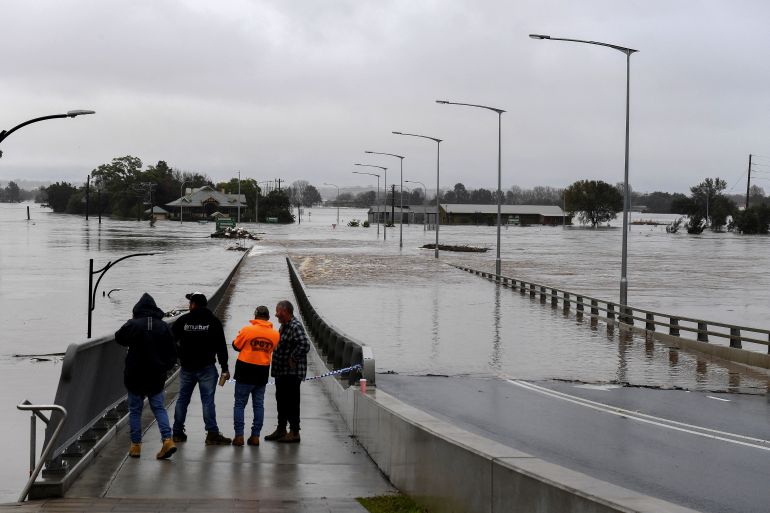‘Devastating’: Thousands more told to evacuate from Sydney floods
Heavy rains continue to lash Australia’s New South Wales, threatening to submerge areas that have already experienced several flooding events this year.

Australia’s emergency services have issued new evacuation orders for tens of thousands of people in the country’s largest city, Sydney.
The order on Monday came as the Bureau of Meteorology warned that an intense low-pressure system off Australia’s east coast would bring heavy rains for a third day across Sydney and its surrounds in the east coast state of New South Wales (NSW).
Keep reading
list of 4 itemsFrench, Australian leaders meet in effort to rebuild ties
Australian firm halts facial recognition trial over privacy fears
‘Horrific’ incidents revealed in Australia mining inquiry
“We currently, across New South Wales, have 64 evacuation warnings in place and 71 evacuation orders,” Dominic Perrottet, the NSW premier, said at a news conference. “That is impacting 32,000 people across New South Wales.”
He asked residents to avoid any non-essential travel, including on public transport, with some roads already underwater and others at risk of sudden flash flooding.
“Over the last few days, there has been 116 flood rescues. Since 9pm last night, we have had 83 flood rescues as well as 1593 requests for assistance,” Perrottet added.
No deaths have been reported so far.
In Sydney’s western suburbs, which residents say have already experienced four flooding events this year, frustration was swelling.
“It’s just devastating. We are in disbelief,” said Therese Fedeli, the mayor of Camden, where mud-brown river waters had transformed a large stretch of land into a lake.
“Most of them have just come out of the last flood, getting their homes back in place, their businesses back in place and unfortunately we are saying it is happening again.”
Tracey, a resident from flood-hit Windsor, said she cannot cope with the frequent floods.
“We are over it. We are so over it. (This) is a bit much for us,” she told ABC television after returning home to rescue some of her animals.
“There’s a lot of people in the area that are elderly with illnesses and stuff like that. Basically, we’re stuck, we’re stranded.”
The Bureau of Meteorology said about 100 millimetres (4 inches) of rain could fall in the next 24 hours over a swath of more than 300km (186 miles) along the NSW coast from Newcastle to the south of Sydney.
“We are expecting the rain to pick up again from this afternoon,” said Jonathan How, a meteorologist.
More than 200mm of rain has fallen over many areas, with some hit by as much as 350mm since Saturday.
The volume of rainfall was almost half of Sydney’s annual average.
Climate change is widely believed to be a contributing factor to the frequent severe weather events, the Climate Council said, adding Australia is “under-prepared”.
The wild weather could trigger flash floods and landslides, with river catchments already near full capacity after the La Nina phenomenon, typically associated with increased rainfall, dominated Australia’s east coast over the last two years.
Bad weather has delayed by 24 hours Monday’s scheduled launch of a NASA rocket from the Arnhem Space Centre in northern Australia, operator Equatorial Launch Australia said.
Federal emergency management minister Murray Watt has offered more troops and said on Monday the government has activated the satellite emergency management system to help with the flood relief efforts.